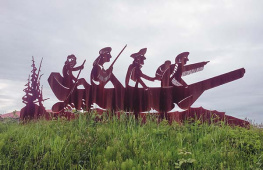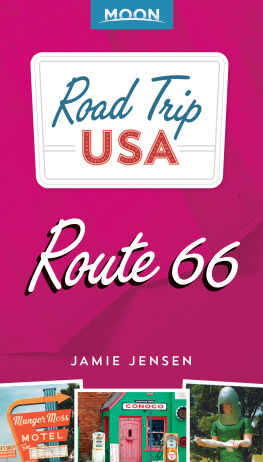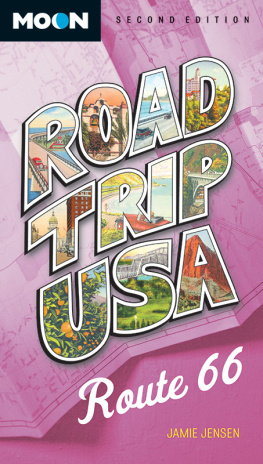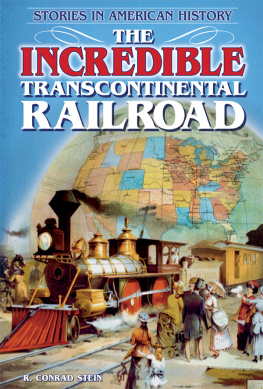
The author and publisher have provided this e-book to you for your personal use only. You may not make this e-book publicly available in any way. Copyright infringement is against the law. If you believe the copy of this e-book you are reading infringes on the authors copyright, please notify the publisher at: us.macmillanusa.com/piracy.
*Please note that some of the links referenced in this work are no longer active.
Contents
For Scott and Jane
CHAPTER ONE
Zero Milestone
I N 1919, THE United States was in a condition that might best be described as traumatized optimism. Fifty thousand Americans had died in World War I. Over ten times as many more had lost their lives to the calamitous pandemic of Spanish flu that had erupted the previous fall. As if that wasnt bad enough, the country was racked with racial tension, industrial disorder, spiraling inflation, and a widespread paranoia about Bolsheviks on the one hand and profiteers on the other. On a bad day, it could seem as if the entire social and economic fabric was on the brink of unraveling.
Yet amid this postwar turmoil, a tangible excitement was in the air. The United States had been the decisive player in the ending of the war and was now unquestionably the most powerful country on earth. Liberty was this new titans theme, and the word was used to name anything at handfrom the bonds that had helped fund Americas participation in the war to the aviation engines designed by the Packard Motor Car Company in Detroit that had helped fight it. While Europe lay in ruins, the prolific, protean energies of America were building entire new industries in a frenzy of invention and innovation.
No business better captured the booming spirit of the day than the automobile industry. In just two decades, America had moved from an eccentric handful of rickety horseless carriages to the private ownership of nearly 6.5 million vehicles. Detroit was pulling in thousands of people to build them, while Akron drew thousands more to make the tires on which they ran. With Goodyear, Goodrich, Firestone, and others working at full capacity, Akron was growing so fast that the city was said to have standing room only.
New firms sprang up all across the nation. Cars and trucks were made in thirty-two different states by 550 different companies; the industry employed more than a million people. This didnt include accessory manufacturers, garages, repair shops, or car dealers; nor did it include all the men now employed building the roads on which these cars might drive.
Congress had over forty bills before it related to road improvements. The best-known proposal came from Senator Charles E. Townsend of Michigan; the Townsend Bill called for a national system of highways and a federal highway commission to run it. Others wanted defense highways built along the bandit-ridden Mexican border, as well as along the Pacific coast, to confront the Japanese menace. States in the Rocky Mountains, meanwhile, wanted roads to carry visitors to their new national parks.
The car had brought into being another thriving new industry: motor tourism. Every major newspaper now had an auto section, and it was standard practice in these pages to map out tours for readers. On Sunday, July 6, 1919, for example, the Washington Evening Star offered a route map to Atlantic City via Wilmingtonbut such an outing was not to be undertaken lightly. To be properly equipped, the paper advised, you would need:
a set of ignition brushes, boxed and labeled
a tow rope
a jack and handle, with two blocks of wood to rest the jack on
a box of plungers for the tube valves
a three-in-one valve tool
a tire-pressure gauge
a wrench for the interruptor points
a file for cleaning the points
a voltmeter for testing the battery
an oil squirt can, filled
a box of assorted nuts, cap screws, lock washers, and cotter pins
a spool of copper wire, and another of soft iron wire
an extra set of electric light bulbs
clean rags
a set of fuses
a folding canvas pail
a full set of tire chains and a chain tool, with extra cross-links
a fire extinguisher
Last but not least, youd need sweaters and rain gear. After all, the paper said, It might be necessary to change a tire in rain and mud, if nothing else.
If a simple day trip from the capital to Atlantic City involved all that, imagine what it might be like to drive from Washington, D.C., to San Francisco.
* * *
T HE SPRING OF 1919 was not a good time to be a professional officer in the United States Army, and Dwight D. Eisenhower knew it. Ike was bored, he was homesick, and he was bitterly disappointed that hed not made it to France before the Great War had ended. Now, as the army demobilized three million men, he envisioned a career spent shuffling paperwork around, growing a belly on a lowly wage behind a desk. He was twenty-eight years old, and he could see few prospects for himself.
Despite his dark mood he had, in fact, been a considerable success. His promotions had been rapid, and less than four years out of West Point he was already a lieutenant colonel. Hed spent most of 1918 in command of ten thousand men at Camp Colt near Gettysburg, Pennsylvania. It was a generals responsibility, and the good-looking blond six-footer from Kansas had worn it well.
Colt was a tank training center; when Ike got there in March 1918, it was chaos. For a start, it didnt have any tanks. After a couple of months a seven-ton French Renault turned up, but though a plant in Dayton, Ohio, was supposed to be building American tanks, no such product had appeared by the time the war ended. Eventually, he got three Renaults, along with two British officers who knew how they worked. He set up a telegraph school and a motor school, and in short order he turned an empty wheat field on the old battleground into a first-class training center. The army never did send him to Europe, because he was too good at preparing other men to go therebut that was little consolation when the war was over and hed missed it. As one of his biographers noted, when Ike was given the Distinguished Service Medal for unusual zeal, foresight, and administrative ability, it must have seemed more a bitter reminder than a welcome award.
The months after November 1918 were a messy, wearisome shuttle from Gettysburg to Fort Dix in New Jersey, to Fort Benning in Georgia, and then in March 1919 to Camp Meade outside Washington, D.C., in Maryland. All this he did alone. Mamie, his wife of three years, and their baby son, Doud Dwight, were half a continent away at Mamies family home in Denver. There were no married quarters available at Camp Meade; Ike thought of bringing them to live in Baltimore or Washington, but he didnt think hed see much more of them if he did. Transportation, he noted wearily, was meager and slow.
With or without them, he would soon lose his rank. His elevation to lieutenant colonel had been a temporary honor brought on by the war, and before long hed be demoted to captain again. His pay would drop by nearly a third, to $200 a month. He would earn it signing papers to send his men back to civilian life, playing bridge and poker in a fast-shrinking service, and wondering if his own unit had any future at all. The Tank Corps was new, and as a potentially subversive affront to traditional infantry doctrine, it was not held in high regard.
An Indiana businessman whod been a junior officer at Camp Colt offered Ike a job, and he thought seriously about taking it. Of his mood at this time, one West Point classmate later said, He was greatly upset. I had the definite impression that he intended resigning his commission. In short, the man who would lead the Allies to victory in Europe in World War II, and go on from there to eight years in the White House, might instead have opted for life as an unknown civilianbut then Eisenhower heard of an extraordinary thing.










